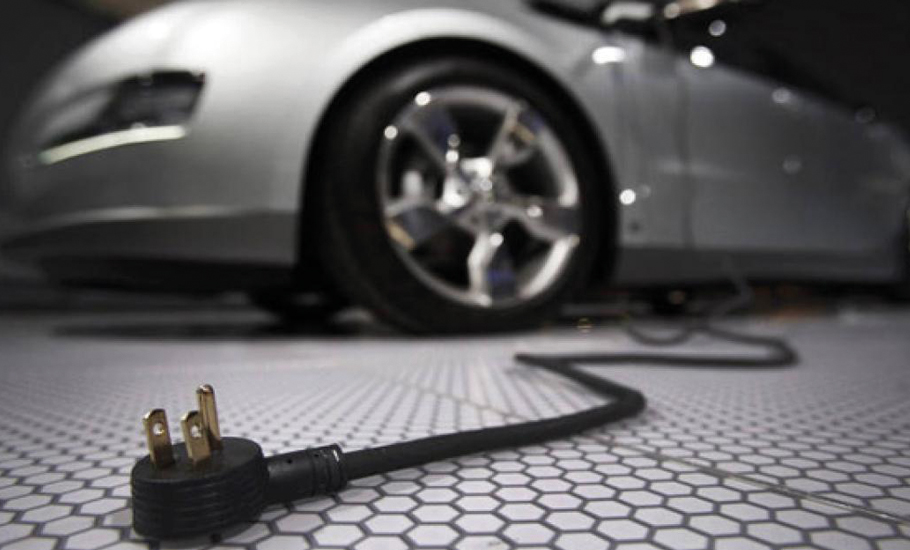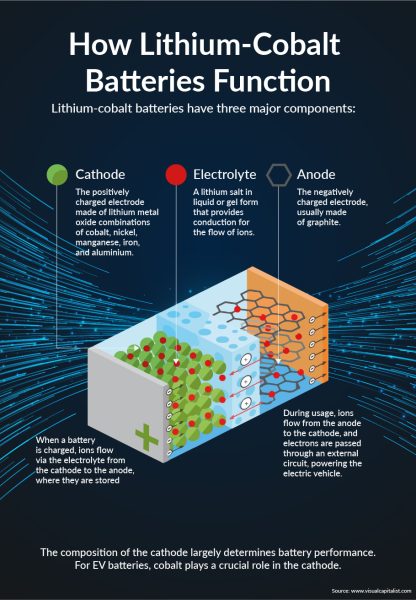
- Home
- News
- Analysis
- States
- Perspective
- Videos
- Education
- Entertainment
- Elections
- World Cup 2023
- Features
- Health
- Business
- Series
- Economy Series
- Earth Day
- Kashmir’s Frozen Turbulence
- India@75
- The legend of Ramjanmabhoomi
- Liberalisation@30
- How to tame a dragon
- Celebrating biodiversity
- Farm Matters
- 50 days of solitude
- Bringing Migrants Home
- Budget 2020
- Jharkhand Votes
- The Federal Investigates
- The Federal Impact
- Vanishing Sand
- Gandhi @ 150
- Andhra Today
- Field report
- Operation Gulmarg
- Pandemic @1 Mn in India
- The Federal Year-End
- The Zero Year
- Premium
- Science
- Brand studio
- Home
- NewsNews
- Analysis
- StatesStates
- PerspectivePerspective
- VideosVideos
- Entertainment
- ElectionsElections
- Sports
- Loading...
Sports - Features
- BusinessBusiness
- Premium
- Loading...
Premium

Electric vehicles rush to get the range versus time chemistry right

On a recent weekday, autorickshaw driver N Palani drove into a charging station in Bangalore’s Cubbon Park well past his usual lunchtime. He hooked up the vehicle’s charging cord to a socket and hurried off to a nearby restaurant and thereafter to run a personal errand. When he returned an hour later, he still had a lot of time on his hands. His electric autorickshaw takes about four...
On a recent weekday, autorickshaw driver N Palani drove into a charging station in Bangalore’s Cubbon Park well past his usual lunchtime. He hooked up the vehicle’s charging cord to a socket and hurried off to a nearby restaurant and thereafter to run a personal errand.
When he returned an hour later, he still had a lot of time on his hands. His electric autorickshaw takes about four hours for a full charge—which gives him a range of 100 km. At roughly Rs 50 for a full-charge, the economics of going electric—compared to LPG or CNG—is clearly unbeatable, he says. But his problem is with the couple of hours he wastes every afternoon waiting for his battery to charge. “They should shorten charging time to one or two hours, or give us a range of 200 km,” he suggests. It’s the classic trade-off—range versus charging time. Even as Palani waits out his daily afternoon top-up, there’s quite a bit of activity towards cracking that puzzle.
Just skim through the news on electric vehicles (EVs) in India of late and you’ll find several companies, including start-ups, in the race to cut down charging time. Full charge in 15 minutes? Are we there yet?
Before we address that question, a peek at the broader picture that’s driving all this—EVs have been catching on in the country, more so in the past year. Over 5,000 electric two-wheelers were sold every week since June 2021 when subsidies under the Faster Adoption and Manufacturing of Electric Vehicles in India (FAME) scheme were redesigned, according to a government statement. In 2021, a total of 1.4 lakh EVs—including about 20,000 three-wheelers and 580 four-wheelers— were incentivised under the FAME scheme.
The Society for Manufacturers of Electric Vehicles (SMEV) expects EV sales in 2022 alone to clock one million units—that’s about as many EVs sold in the last 15 years.
Earlier, electric two-wheelers in India were mostly low-powered scooters (25km/hour) which ran on conventional lead acid batteries in order to keep prices low. But with government subsidies for higher-powered EVs and incentives for manufacture of advanced chemistry cells, the market is shifting to higher speed vehicles using lithium ion (Li-ion) batteries. “In four to five years, we can now confidently predict that around 30 per cent of the two-wheeler market will be electric,” Sohinder Gill, director-general of SMEV, said in a statement on January 6.
A key part of that EV push will be through building a charging station network, and reducing charging time. Of course, battery swapping is the easier way out but to put fast-charging into context, we need to delve into a bit of battery chemistry.
The graphite anode
Nearly every electric vehicle today has a Li-ion battery and there are several kinds of them in use currently—depending on the material used for the electrodes. Basically, lithium is shuttling between the two electrodes—when the battery is charged, the lithium is stored in the anode and when it discharges, the lithium ions flow to the cathode which is usually a metal oxide, such as nickel-cobalt-manganese (NMC) oxide.
“So, here is what’s happening. Most of the batteries that you buy for electric cars have a graphite anode in it,” explains Venkat Srinivasan, director of the US-based Argonne Collaborative Center for Energy Storage Science. “The problem of fast charging typically comes from the graphite anode. It turns out that graphite does not like to be fast-charged.”
As Srinivasan puts it, fast-charging a graphite anode too often leads to a detrimental reaction that either kills the life of the battery, or increases heat which then becomes a safety problem. “It’s really the graphite that’s become the fundamental reason why we can’t fast charge these cells.”
That, in a nutshell, is the battery challenge that researchers worldwide are working on. The context is simple—for EVs to really catch on, the charging experience has to be closer to re-fuelling at a petrol pump currently. Drive-in and drive-out in a matter of minutes.

“That’s really the goal. If you ask the battery people, we all will say, let’s try to get to 15 minutes first,” says Srinivasan.
Tesla, for instance, has superchargers it says can recharge up to 200 miles in 15 minutes, depending on the model—but, as the company puts it, that’s ideal for a long trip. For daily commutes, it recommends a variety of slower home charging options.
“So, the way to think about this is that batteries are all about a compromise of different matrix,” says Srinivasan. “Always fast charging, you can’t expect that everything else is going to be the same. Cycle life, energy density, cost…something has to give.” That’s why companies have various approaches to charging so that they can optimise on different metrics, he points out. “The way I think about where the electric vehicle market is going is that you are going to find out in the next few years that car companies will offer a fast-charging car, a non-fast charging car…they’ll start providing that kind of differentiation, I think.” Much like the toss-up between speed and fuel efficiency for petrol vehicles.
Typically, the trade-off between EV range and charging time relates to the energy density of a battery—how much energy it can hold. Higher energy density means an EV can clock more miles— on the converse, a battery that can charge faster will have to sacrifice range for higher power density.
Currently, entry-level electric sedans in India take between 1.5 and 2 hours at a fast-charging booth. But most two-wheelers and three-wheelers in the market today use low-voltage batteries and don’t yet have fast-charging connectors. Therefore, that’s an area which is attracting some new players.
The quick charge
“Any traditional battery in a three-wheeler, you do a four-hour charge. That, we are cutting down,” says Kartik Hajela, co-founder of Log9 Materials, a Bangalore-based energy start-up which has partnered with EV manufacturers to supply rapid-charging batteries. “So, our three-wheelers take 35 minutes and our two-wheelers take 12-15 minutes to charge,” he says. Reducing charging time involved research and development on the cell chemistry in order to allow the battery to take high current without affecting cycle-life, he says. Broadly, it’s about finding a sweet spot between energy density and power density.
“In our case, we have changed the chemistry in a way we can do fast-charging,” says Hajela. “Fundamentally, both life of the battery and charging time have to be optimised together.”
Log9 Materials is currently eyeing the cargo or commercial segment such as delivery vehicles where running time is higher than personal vehicles. “Most of the applications that we are targeting are intra-city applications where the range required for any vehicle today would be 100-200 odd km. Today, the vehicle that we have is about 70-80 km and the charging time is 35 minutes. So a person can do his two shifts,” he says. Most electric three-wheelers in India today offer between 70 and 100 km. “So what we are saying is we will not focus on increasing range, we will quicken the charging time. That increases the overall effective change.”

In the pipeline, says Hajela, is the goal of making rapid-charge available to four-wheeler cargo vehicles and cabs.
The road ahead
Typically, new battery chemistries take a long time to develop. But old technologies don’t exactly drop off the market, given the sheer variety of applications they can be used for. Think of it— vehicles, grid storage, telecom towers or elevators, each of these requires different types of batteries.
In the context of Li-ion batteries for EVs, the global community is exploring various new chemistries—naturally driven by the quest for efficiency and lower prices.
For instance, using silicon anodes instead of graphite is one area of research, points out Venkat Srinivasan of Argonne. Silicon anodes tick all the boxes when it comes to cost, fast-charging and energy density but the only hitch is they don’t last very long. Meanwhile, cathodes made of lithium-ion phosphate—which have been in use for a while and typically offered lower energy density—are now making a comeback because prices of cobalt have risen.

“But we are also simultaneously trying to see how much can we push charging of graphite-based cells because that’s the one we can buy today. There is an active effort in trying to change how we make the graphite into these electrodes, what kind of electrolytes do we add in the battery and we are also trying to find ways to pull the heat from the battery which is a big challenge when you fast charge,” says Srinivasan.
“So the way I think about it is that we are doing research on today’s chemistries, trying to get them to charge as fast as we can while we are also trying to invent the next generation chemistries that we think are going to be absolutely making it easier for us to fast charge these batteries.”

